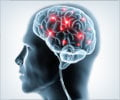- It's crucial to be able to identify facial drooping, arm weakness, and speech difficulties as potential signs of a stroke
- In the event of a suspected stroke, calling for emergency medical help and noting the time of symptom onset are critical steps
- Seeking prompt medical attention significantly improves the chances of minimizing damage and enhancing the prospects for recovery after a stroke
Clinical Characteristics of Stroke Occurring while Bathing
Go to source). A stroke, colloquially referred to as a 'brain attack', transpires when the blood supply to the brain is abruptly interrupted, leading to a deprivation of oxygen to brain cells.
This can result in memory loss, muscle control issues, and in severe cases, permanent damage. While strokes can happen to anyone, at any time, it is important to understand why they seem to manifest more frequently in the bathroom.
Factors Leading to Strokes in the Bathroom
Toilet Strain
: Excessive strain during defecation, often due to an unnatural sitting posture, can affect the cardiovascular system, potentially leading to strokes or loss of consciousnessImproper Bathing Sequence
: Starting a bath or shower by wetting the head and hair first can lead to a rapid change in body temperature. This sudden shift may generate pressure and cause artery or capillary breakageWater Temperature
: Water, commonly used in winter (cold water), can cause arteries to shrink, impeding blood flow to vital organs like the heart and brainBathroom Slips and Falls
: Slipping in the bathroom is a common occurrence, and it can result in head injuries, potentially leading to bleeding in the brain.
How to Prevent Bathroom-Related Stroke?
Proper Posture during Defecation
: Educate individuals on the importance of maintaining a natural sitting posture during defecation to reduce strain on the cardiovascular systemSequenced Bathing
: Encourage starting a bath or shower by wetting the legs first, then gradually working up to the head to minimize temperature-related pressure changesRegulate Water Temperature
: Ensure that water temperatures are adjusted to a comfortable level, especially in colder months, to prevent artery constrictionBathroom Safety Measures
: Install grab bars on bathroom walls, use bath mats with suction cups to cover slippery surfaces, and consider using bath benches or stools to prevent slips and falls
How to Recognize Stroke?
Recognizing the symptoms and signs of a stroke is crucial for seeking immediate medical attention, as early intervention can significantly improve outcomes. Here are the key indicators to be aware of:Facial Drooping:
One side of the face may droop or feel numb. Ask the person to smile; if their smile is uneven or lopsided, it could be a sign of a strokeArm Weakness:
One arm may become weak or difficult to move. Ask the person to raise both arms; if one arm drifts downward or is noticeably weaker, it may indicate a strokeSpeech Difficulty:
Speech may become slurred, garbled, or difficult to understand. Ask the person to repeat a simple sentence; if they struggle or produce unintelligible speech, it may be a sign of a strokeSudden Severe Headache:
A sudden and severe headache, often described as the worst headache of one's life, can be a sign of a hemorrhagic stroke (caused by bleeding in the brain)Confusion or Disorientation:
The person may become confused, have difficulty understanding or following instructions, or may not be aware of their surroundingsTrouble Walking or Coordination Issues:
A stroke can affect balance and coordination. The person may have trouble walking, stumble, or experience dizziness or loss of coordinationVision Problems:
Vision may become blurred, or the person may experience a sudden loss of vision in one or both eyesDizziness or Loss of Balance:
The person may feel lightheaded, dizzy, or unsteady, even without any obvious causeNausea or Vomiting:
Some people may experience nausea or vomiting, particularly in conjunction with other symptomsDifficulty Swallowing:
A stroke can affect the muscles involved in swallowing, leading to difficulty in eating or drinking
Call for Emergency Medical Help:
Dial emergency services immediately. In the United States, call 911Note the Time:
Keep track of when the symptoms first appeared. This information is crucial for medical professionalsDo Not Wait:
Do not attempt to drive the person to the hospital yourself. Emergency medical services are equipped to provide rapid care
To conclude, understanding the factors that contribute to strokes in the bathroom is crucial for taking proactive measures to prevent such incidents. By implementing the recommended preventive measures, individuals can significantly reduce the risk of experiencing a stroke in the bathroom. Additionally, spreading awareness about stroke prevention in this context can contribute to a safer bathing experience for everyone.
Reference:
- Clinical Characteristics of Stroke Occurring while Bathing - (https://pubmed.ncbi.nlm.nih.gov/28341200/)
Source-Medindia
















